
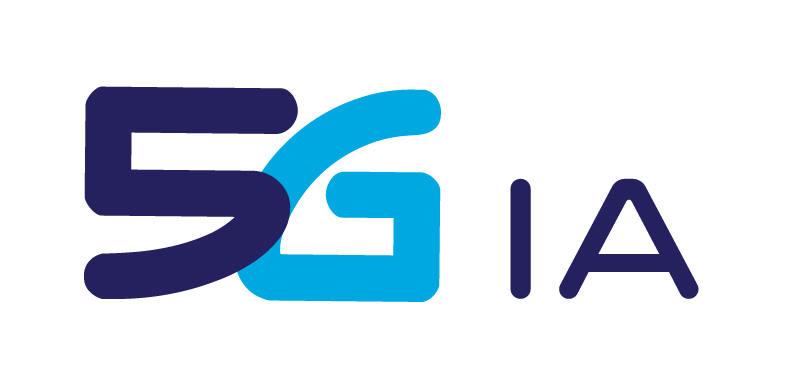
- About us
- Getting Involved
- Plans & Papers
- Events
- European 5G Activities
- Media & News
- Contact
Newsletter 24 – April 2021

Welcome Horizon Europe!
Since mid-2015, Horizon 2020 launched 88 5G PPP projects. Projects from Phases 1 and 2 ended a few months ago, some Phase 3 projects are close to the end. The last 5G PPP projects have just started.
Horizon Europe and the Smart Networks and Services partnership.
 |
Horizon Europe and the Smart Networks and Services partnership |
 |
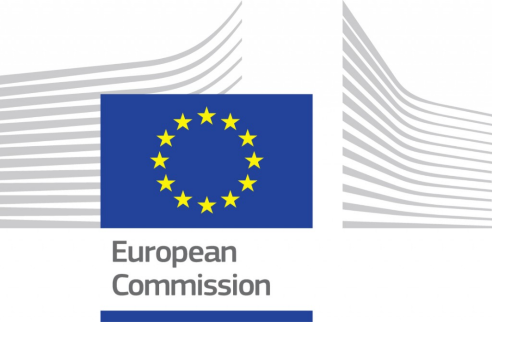
In 2018, the Commission proposed a 100 billion EUR research and innovation programme Horizon Europe to succeed to Horizon 2020. The European Parliament and the Council of the EU reached a provisional agreement in March 2019 on Horizon Europe. The provisional agreement was then endorsed mid-April 2019. A political agreement on Horizon Europe was reached on 11 December 2020. The budget was set at 95.5 billion EUR (including 5.4 billion EUR from the Next GenerationEU, programme of the EU for Recovery from Covid-19 crisis). Horizon Europe is the 9th European Research and Development Framework Programme. It came into force on January 1st, 2021 for the period from 2021 to 2027 and expects to allow 95.5 billion EUR to research (including 5.4 billion EUR from NextGenerationEU, programme of the EU for Recovery from Covid-19 crisis). It tackles climate change, helps to achieve the UN’s Sustainable Development Goals and boosts the EU’s competitiveness and growth. The programme facilitates collaboration and strengthens the impact of research and innovation in developing, supporting and implementing EU policies while tackling global challenges. It supports creating and better dispersing of excellent knowledge and technologies. It creates jobs, fully engages the EU’s talent pool, boosts economic growth, promotes industrial competitiveness and optimises investment impact within a strengthened European Research Area. Legal entities from the EU and associated countries can participate.
Horizon Europe includes new elements compared to previous Framework Programmes:
As the Horizon 2020 framework programme comes to an end and the new Horizon Europe framework programme launches, the 5G IA, as the industrial partner of the 5G PPP, is preparing for the evolution of the 5G activities into the Smart Networks and Services (SNS) context within the Horizon Europe framework programme. Within the SNS, the 5G IA will be the private side representative, jointly managing the Partnership with the EU. The SNS Partnership aims to support European technological sovereignty on Smart Networks and Services. It will contribute to enable the digital and green transitions and will allow European players to develop the technology capacities for 6G systems as the basis for future digital services towards 2030. The SNS proposal, which was prepared by the 5G IA, together with other leading ICT organisations, can be found, together with other documents and information at https://5g-ia.eu/sns-horizon-europe/. 5G IA invites SNS stakeholders to join the association to contribute in the shaping and implementing of the SNS Partnership. |
||
 |
What is the status of Horizon 2020 to date? |
 |
 When it was launched, Horizon 2020 was the biggest EU Research and Innovation programme ever with nearly 80 billion EUR of funding available over 7 years (2014 to 2020), in addition to the private investment attracted by the fund. It has now been surpassed by Horizon Europe. When it was launched, Horizon 2020 was the biggest EU Research and Innovation programme ever with nearly 80 billion EUR of funding available over 7 years (2014 to 2020), in addition to the private investment attracted by the fund. It has now been surpassed by Horizon Europe.
The Horizon 2020 work programme comprised an introduction, 18 thematic sections and the general annexes describing general rules such as standard admissibility conditions and eligibility criteria, selection and award criteria, etc. It was made of four mutually reinforcing Focus Areas that cut across the programme boundaries and were aligned to major policy priorities: ‘Building a low-carbon, climate resilient future’ (LC); ‘Connecting economic and environmental gains – the Circular Economy’ (CE); ‘Digitising and transforming European industry and services‘ (DT); and ‘Boosting the effectiveness of the Security Union‘ (SU). Together these Focus Areas gave a combined budget of over 7 billion EUR (2018-2020). A dedicated section brought together a spectrum of activities on next generation battery technologies to drive the transition towards a de-carbonised society. 5G issues were housed in the 5G PPP initiative between the European Commission and European ICT industry (ICT manufacturers, telecommunications operators, service providers, SMEs and researcher Institutions). The 5G PPP is now in its third phase which started in June 2018. The challenge for the 5G Public Private Partnership (5G PPP) was to secure Europe’s leadership in the particular areas where Europe was strong or where there was potential for creating new markets such as smart cities, e-health, intelligent transport, education or entertainment & media. The 5G PPP initiative reinforced the European industry to successfully compete on global markets and open new innovation opportunities. It “opened a platform that helped us reach our common goal to maintain and strengthen the global technological lead”. The key challenges for the 5G Infrastructure PPP were:
Overall, 88 projects have been launched in three phases. Phases 1 and 2 are over and related projects have ended. Phase 3. 3 until 3.6 is still ongoing. Phase 3.1 Key Achievements from the 5G PPP include over 100 highlighted results from projects in Phase 3 under 20 program level achievements. Key achievements from all the completed projects can be viewed on a phase by phase basis. Key achievements for phase 1 are available here. Achievements for phase 2 are there. Phase 3.1 key achievements can also be accessed online. “Key achievements v 3.1” considering the latest accomplishments of the 5G PPP Phase 3.4 “5G Long Term Evolution” projects and additional breakthroughs of some of Phase 3.3 “Advanced 5G Validation trials across multiple vertical industries” projects The reported 100 achievements have been grouped in 11 different categories: 1-Performance Evaluation, 2-Cellular systems, Functional, Logical & Physical Architecture 3-Radio Access Network 4-Fronthaul, Backhaul and MetroHaul, 5-Technology Enablers 6-Network Management and Orchestration of services 7-Software Networks 8-Security, Privacy, Resilience 9-Services Platforms and Programming Tools NetApps 10-Verticals Experimentation, Trials and Pilots 10.1- Industry 4.0 10.2- Agriculture and agrifood 10.3- Automotive 10.4- Transport and Logistics 10.5 Smart Cities and Utilities 10.6- Public safety 10.7- Smart(air)Ports 10.8-Energy 10.9- eHealth & Wellness 10.10- Media & Entertainment, Tourism and 11- Business, Standardization and Regulation. |
||
 |
5G status in Europe: 27 5G countries |
 |
| The number of European 5G alive networks keeps growing. 5G is now available in 24 Member States (in EU27) and in 27 EU countries (including Norway, Switzerland and the UK). Fourteen countries (Austria, Bulgaria, Finland, France, Germany, Greece, Ireland, Italy, Luxembourg, Poland, the Netherlands, Spain, Sweden and the UK) are now full5G countries with all players providing 5G commercial services. Only Lithuania, Malta and Portugal have not launched 5G services as at April 1st, 2021 so far. In Russia, three players (MegaFon, MTS and Tele2 Russia) plan 5G in 2021. In Ukraine, MNOs have recently focused on 5G. It is looming: Lifecell, Vodafone and Kyivstar are planning to launch 5G services in the first half 2021.
Europe has seen much progress and intense sepctrum activity in the last weeks. Seven EU countries have assigned spectrum or made spectrum available on demand subject to coordination in all 5G pioneer bands: Denmark, Italy, Finland, Germany (26 GHz on demand), Greece, Slovenia and the UK (26 GHz on demand).
Multiband auctions in Portugal and Denmark are ongoing. Both countries started auctions in March 2021. Portugal is auctioning 700 MHz, 900 MHz, 1800 MHz, 2.1 GHz, 2.6 GHz and 3.6 GHz spectrum. 1500MHz, 2100MHz, 2300MHz, 3.5GHz and 26GHz spectrum is for sale in Denmark. Adoption is still low but is expected to increase as Apple unveiled its first 5G-capable device Fall 2020. |
||
 |
5G status in Asia: massive adoption and deployment |
 |
| 5G has been launched in a limited number of Asian countries. 5G services are available in 10 mobile markets including Australia, China mainland, HongKong, Japan, New Zealand, The Philippines, Singapore, South Korea, Taiwan and Thailand raising 30 alive 5G networks. 5 out of these 10 Asian 5G markets are full5G markets with all players providing 5G services. 5G will not be available in less-advanced markets before year-end 2021, 2022 or 2023. 5G could be launched in Malaysia in the second half 2021. In India, the India’s Department of Telecom concluded a spectrum auction including 700, 800, 900, 1800, 2100, 2300 and 2500 MHz bands on March 1st, 2021. These frequencies are not especially for 5G. Nevertheless, it is worth noting that 700 MHz spectrum did not see any bids at all for the second time despite a sharp decrease in reserve prices.
Australia has fully assigned 26 GHz and 28 GHz spectrum (24.7-29.5 GHz) in two stages. The first one took place in December 2020 for spectrum in 24.7-25.1 GHz and 27.5-29.5 GHz. The remaining part of 26 and 28 GHz spectrum (25.1-27.5 GHz) was auctioned in April 2021. Later in 2021, Australia plans to auction lower frequencies for 5G (850/900 MHz). In 2020, 5G succeeded in making a massive entrance in Asian advanced mobile markets. In 2021, it continues on the same path. 5G adoption in China continues to grow at an unprecedented pace. The country ended 2020 with 322 million 5G subscriptions. In South Korea, 11.9 million 5G subscribers were registered at year-end 2020. NTT DoCoMo targets 2.5 million 5G subscribers as at end March 2021. If China is way ahead, Chinese reported data provides overstated figures. In fact, national players report “5G-full package subscribers”. Not every 5G package subscribers uses a 5G capable-device, meaning that every “5G package subscriber” cannot be counted as 5G subscribers having access to a 5G network. What is more, some players propose 5G plans at a lower price than a 4G one, pushing aggressively for migration. The portion of 5G plan holders using to a 4G network is difficult to assess. On the deployment side, Chinese figures appear overstated too. When a base station is using for example three frequency bands in China, Chinese players report three “logical sites” while Western players and regulators only report one “physical” site. This leads to overstated figures by a factor of maybe 3. Asian mobile players have also started migrating to 5G standalone. |
||
 |
5G status in North America |
 |
| Major US and Canadian mobile network operators have launched 5G commercial services. The US players were among the first to launch 5G services on mmwave frequencies without access to mid frequencies (except Sprint). This led to lower experience that expected. By using Sprint 2.1 GHz spectrum, T-Mobile USA has significantly increased its footprint.
Players are now focusing network deployment. All major US cities enjoyed 5G services even partially as at end 2020. Coverage is still patchy but will increase slightly with players using DSS and low frequencies. Speeds delivered over 5G are higher compared to 4G with no details on how faster they are. AT&T advertises “improved” speeds while Verizon mentioned “faster” speeds for 5G without any backing figures disclosed. US mobile players have also started migrating to 5G standalone. Dish is expected to launch 5G services in the third quarter 2021. Deployment in the recently auctioned 3.5 GHz spectrum should begin at the end of 2021. Auction 107 (3.70-3.98 GHz) which ended in February 2021 was the most expensive auction ever (more than AWS-3) generating 81.2 billion USD (67.2 billion EUR). In addition to the bids, spectrum holders will have to pay for the relocation of existing users estimated at a little less than 10 billion USD (8.3 billion EUR). The FCC continues to open up more spectrum. The 2.5 GHz frequencies (Auction 108) will be auctioned later in 2021. The 3.45-3.55 GHz could be made available for 5G in Auction 110 in early October 2021. A number of additional spectrum bands will be made available from 2022. The auction of 50 MHz in 1300-1350 MHz frequencies is considered. The auction of another mmwave band (probably the 42 GHz) is expected in 2022. After 2022, the lower 3 GHz, the 4.8 GHz and the 7 GHz bands could be sold. |
||
Save the date!
 |
6G Symposium Europe – Shaping Industry & Society Beyond 5G |
 |
|
Online event – May 4
The 6G Symposium will explore the key questions around what 6G offers industry and society and how to get there. More information about the event here. |
||
 |
IEEE 5G Summit 2021 |
 |
|
Dresden, Germany – May 5
More information about the event and registration here. |
||
 |
IEEE 5G Virtual Summit – IEEE 5G for Connected and Automated Mobility (CAM) |
 |
|
Online event – May 11-12
This first 5G for CAM conference will bring together a variety of EU-funded projects in the area of CAM, to share their experiences and present results with a view towards deployment. As Horizon 2020 is open to International participation, the event will also provide an opportunity to address a broader global perspective. Many 5G PPP projects will be present: Phase 3 5G PPP Automotive Projects 5G-CARMEN, 5G-CROCO and 5G-MOBIX and 5G for CAM Projects 5G-MED, 5G-RAIL, 5G-ROUTES will be there and will be accompanied by 5G-HEART a 5G PPP Phase 3, Part 3 Project on “5G HEalth AquacultuRe and Transport validation trials”, by 5G-LOGINNOV a 5G PPP Phase 3 Part 5 Project which envisions to use technologies to innovate logistics and ports, by Vital 5G a 5G PPP Phase 3 Part 6 Project on “Vertical Innovations in Transport And Logistics over 5G experimentation facilities” and by 5G-PICTURE a 5G PPP Phase 2 Project on “5G Programmable Infrastructure Converging disaggregated neTwork and compUte Resources” and by the H2020 5G-DRIVE project. More information about this event here. |
||
 |
Final 5G EVE Webinar – Validation-Platform Achievements and Multi-Site Use-Case Deployment |
 |
|
Online event – May 26
Participation in the webinar is free and requires registration. The registration deadline is 24 May 2021. Further information and online registration are available via the 5G EVE Webinar Page.
|
||
 |
ICT 2021 Conference |
 |
|
London, UK – June 1-3 2021
The ICT 2021 Conference will be hosted in London, United Kingdom on June 1-3, 2021. The aim of this conference is to provide a forum for researchers and technologists to present new advances and contributions in the form of keynotes, tutorials, workshops as well as regular and special sessions with the objective to share ideas and progress in the field of wireless communications, networking, and signal processing. This twenty-eighth edition of the ICT event will focus on promoting new ideas, state-of-the-art research, and development as well as visionary future directions in telecommunications. |
||
 |
EuCNC & 6G Summit 2021 |
 |
|
Online event – June 8-11
This conference is one of the most prominent communications and networking conferences in Europe, which efficiently brings together cutting-edge research and world-renown industries and businesses. The conference will focus on various aspects of 5G communications systems and networks, including cloud and virtualisation solutions, management technologies, and vertical application areas. It will target to bring together researchers from all over the world to present the latest research results, and it is one of the main venues for demonstrating the results of research projects, especially from successive European R&D programmes co-financed by the European Commission. More information about this event here.
|
||
 |
European Research and Innovation Days |
 |
|
Online event – June 23 – 24
This year marks the start of Horizon Europe, our most ambitious EU research and innovation programme ever, and will be a decisive moment to strengthen our European Research Area. Cooperation in research and innovation is essential in our recovery from the COVID-19 pandemic and will pave the way to a greener and more digital future. The European Research and Innovation Days represent a unique opportunity to add your voice to the conversation. More information about this event here.
|
||
 |
MWC Barcelona 2021 |
 |
|
Barcelona, Spain – June 28 – July 1
The event is partially physically- partially virtually-held. The multi-layered safety approach includes prevention, protection, mitigation, monitoring and maintaining safety. Layers include frequent testing, contact tracing, touchless environments, re-vamped catering, occupancy monitoring, upgrades to facility infrastructure, increased medical staff – and personal commitments like adhering to social distancing.
|
||
 |
IEEE International Mediterranean Conference on Communications and Networking |
 |
|
Athens, Greece – July 5-8
The inaugural IEEE International Mediterranean Conference on Communications and Networking (MeditCom) will take place 5-8 July 2021 in Athens, Greece. IEEE MeditCom will bring together visionaries in academia, research labs and industry from all over the world to the shores of the Mediterranean Sea, with programming that will address many of the outstanding challenges that exist in the areas of communications and networking. The conference will solicit research papers on a wide range of research topics, spanning both theoretical and systems research along with vertical technologies. There will be a Special Session co-organized by 5G-Routes, ICT4CART and 5G-Croco on the topic of ‘AI Assisted Technologies for Connected and Automated Mobility (CAM)’. Further information on IEEE MeditCom website. |
||
 |
ITS World Congress 2021 |
 |
|
Hamburg, Germany – October 11-15
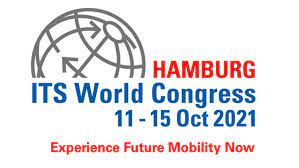 The Congresses are the yearly celebration of smart mobility: they underline the importance of Intelligent Transport Systems (ITS), particularly in cities and regions where they are hosted, and provide an excellent platform that supports the education, thought-leadership, business development, and the overall steady growth of the smart mobility industrial growth. They include live, interactive and thought-provoking sessions where industry experts present the latest developments in ITS, showcasing and demonstrating cutting-edge technology within the event’s spacious exhibition, technical tours and live demonstration opportunities. The Congresses are the yearly celebration of smart mobility: they underline the importance of Intelligent Transport Systems (ITS), particularly in cities and regions where they are hosted, and provide an excellent platform that supports the education, thought-leadership, business development, and the overall steady growth of the smart mobility industrial growth. They include live, interactive and thought-provoking sessions where industry experts present the latest developments in ITS, showcasing and demonstrating cutting-edge technology within the event’s spacious exhibition, technical tours and live demonstration opportunities.Further information on ITS World Congress website. |
||
The editor of the 5G PPP newsletter on behalf of the Full5G Project is Carole Manero, IDATE DigiWorld, CS94167 – 34092 Montpellier Cedex 5, France. This document reflects -only the views of its authors.



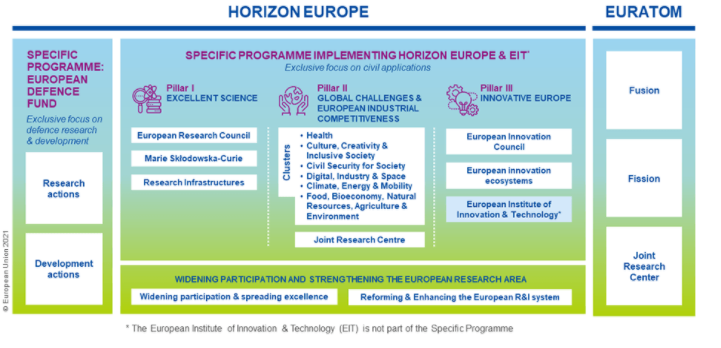

 By 2030 and the dawn of commercial 6G the world’s climate aspirations, population, economy and work will have changed. If we are to deliver a smart, connected world that can meet the many demands on it, we need to start with all the stakeholders in the room and grow a complete set of viable solutions and business cases, not just a technology.
By 2030 and the dawn of commercial 6G the world’s climate aspirations, population, economy and work will have changed. If we are to deliver a smart, connected world that can meet the many demands on it, we need to start with all the stakeholders in the room and grow a complete set of viable solutions and business cases, not just a technology. IEEE 5G++ Summit Dresden has become a well-known annual high-impact event that brings together industry leaders, innovators, and researchers from industry and academia to exchange ideas that will help to drive standards and rapid deployment of 5G++ technologies. It takes a holistic approach to 5G system design, ranging from silicon hardware, wireless interfaces, networks, edge clouds all the way up to Tactile Internet applications.
IEEE 5G++ Summit Dresden has become a well-known annual high-impact event that brings together industry leaders, innovators, and researchers from industry and academia to exchange ideas that will help to drive standards and rapid deployment of 5G++ technologies. It takes a holistic approach to 5G system design, ranging from silicon hardware, wireless interfaces, networks, edge clouds all the way up to Tactile Internet applications.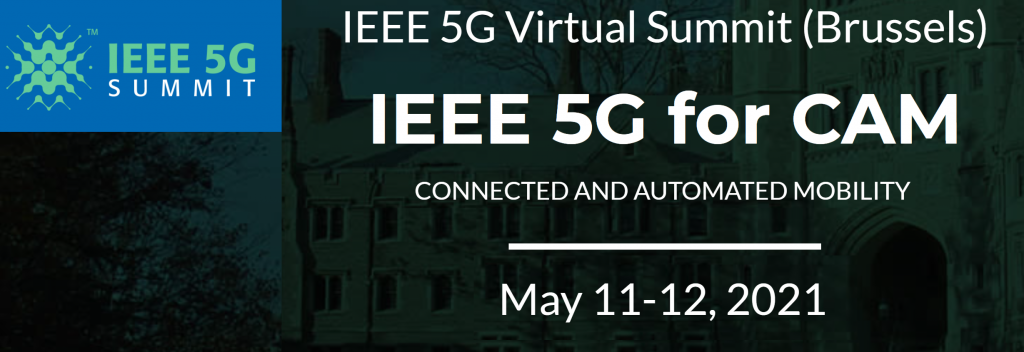 In the context of the European 5G Action Plan, the mobility vertical, spanning road, rail, water ways and coastal maritime, including a multi-modality component, has been singled out as a driver of the European Single Digital Market. The main societal objectives of Connected and Automated Mobility (CAM) are Safer Rides (enhanced road safety), More Efficient Rides (lower emissions and reduced congestion) and Connected Rides (infotainment). However, the impact of CAM on jobs and growth, as well as on global competitiveness, will be paramount. This will be achieved by building a complete ecosystem around infrastructure, equipment and services on top of 5G advanced connectivity, whilst mutualizing the huge investments in mobile and fixed broadband. Considerable effort and funding (from Horizon 2020) has been put into large-scale testing and validation, and even pre-deployment, of 5G namely in cross-border segments of Trans-European Transport Corridors. The objective is now to move towards large-scale deployment across the Continent.
In the context of the European 5G Action Plan, the mobility vertical, spanning road, rail, water ways and coastal maritime, including a multi-modality component, has been singled out as a driver of the European Single Digital Market. The main societal objectives of Connected and Automated Mobility (CAM) are Safer Rides (enhanced road safety), More Efficient Rides (lower emissions and reduced congestion) and Connected Rides (infotainment). However, the impact of CAM on jobs and growth, as well as on global competitiveness, will be paramount. This will be achieved by building a complete ecosystem around infrastructure, equipment and services on top of 5G advanced connectivity, whilst mutualizing the huge investments in mobile and fixed broadband. Considerable effort and funding (from Horizon 2020) has been put into large-scale testing and validation, and even pre-deployment, of 5G namely in cross-border segments of Trans-European Transport Corridors. The objective is now to move towards large-scale deployment across the Continent.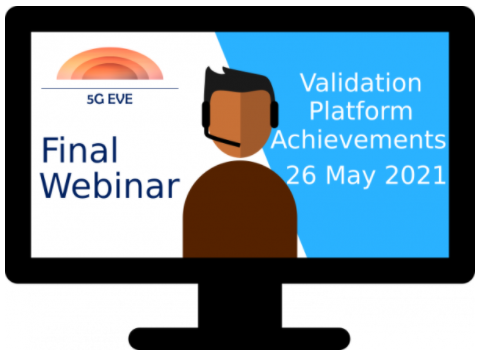 In this three-hour webinar, we will present the major achievements in the development and use of the 5G EVE validation platform, and we will demonstrate the multi-site capabilities of the platform. Experts from the consortium will present new platform features like, for example, performance diagnostics, and demonstrate the 5G EVE gaming use case as an illustration of the multi-site capabilities of the 5G EVE platform. In a short training session in the last part of the webinar, we will share practical knowledge on platform usage, which will be useful for the utilization of the platform beyond the duration of the project.
In this three-hour webinar, we will present the major achievements in the development and use of the 5G EVE validation platform, and we will demonstrate the multi-site capabilities of the platform. Experts from the consortium will present new platform features like, for example, performance diagnostics, and demonstrate the 5G EVE gaming use case as an illustration of the multi-site capabilities of the 5G EVE platform. In a short training session in the last part of the webinar, we will share practical knowledge on platform usage, which will be useful for the utilization of the platform beyond the duration of the project.
 EuCNC 2021 is the 30th edition of a successful series of a conference in the field of telecommunications, sponsored by the IEEE Communications Society and the European Association for Signal Processing, and supported by the European Commission. EuCNC 2021 intends to introduce 6G.
EuCNC 2021 is the 30th edition of a successful series of a conference in the field of telecommunications, sponsored by the IEEE Communications Society and the European Association for Signal Processing, and supported by the European Commission. EuCNC 2021 intends to introduce 6G.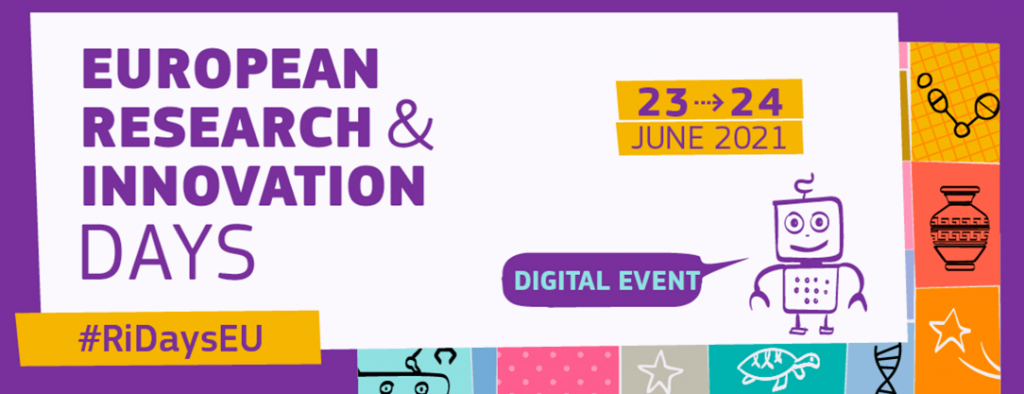 European Research and Innovation Days is the European Commission’s annual flagship Research and Innovation event, bringing together policymakers, researchers, entrepreneurs and the public to debate and shape the future of research and innovation in Europe and beyond.
European Research and Innovation Days is the European Commission’s annual flagship Research and Innovation event, bringing together policymakers, researchers, entrepreneurs and the public to debate and shape the future of research and innovation in Europe and beyond.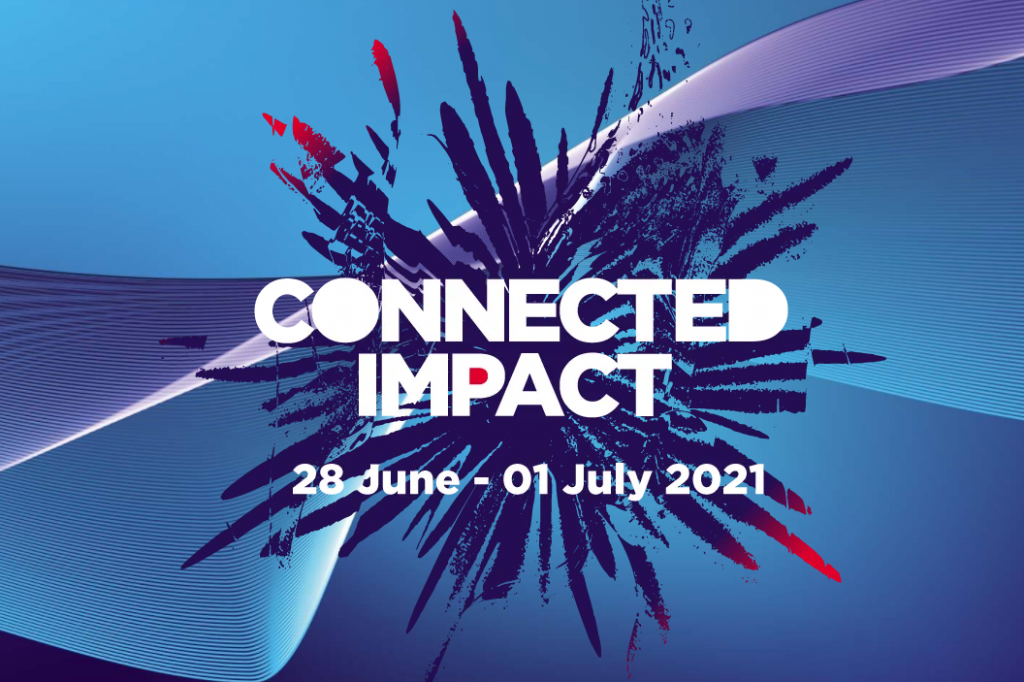 The next MWC is scheduled from June 28 to July 1, 2021. The 2021 lead theme is “Connected Impact” as a reference to the virus.
The next MWC is scheduled from June 28 to July 1, 2021. The 2021 lead theme is “Connected Impact” as a reference to the virus.


